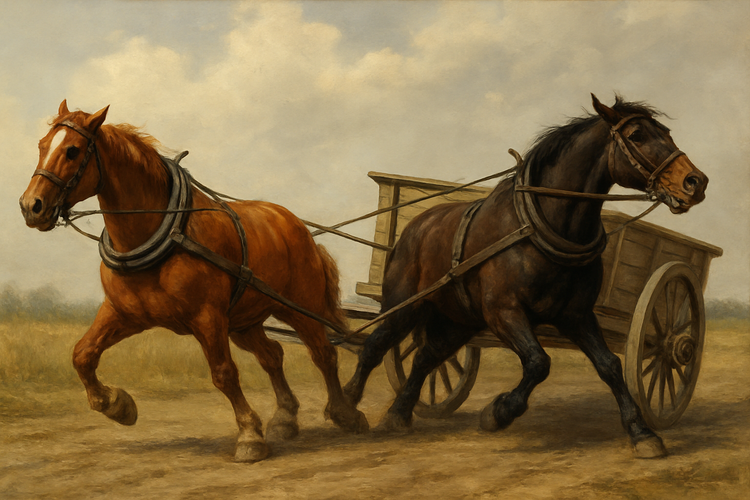The Porsche 911 : Evolution Without Compromise

Some products do not follow trends. They define them.
The Porsche 911 did not begin as a perfect car. It began as a committed idea. One refined over decades through disciplined iteration, engineering restraint, and relentless user focus.
Launched in 1964 as the successor to the Porsche 356, the 911 retained a rear-mounted engine and unmistakable silhouette. What began as a bold configuration became one of the longest-running and most successful platforms in automotive history. Porsche never abandoned the core. They refined it with care, conviction, and data from the road and the racetrack.
Origins: Engineering with Heritage, Not Nostalgia
The 911 emerged from the vision of Ferry Porsche and the technical leadership of Ferdinand Piëch. Rather than adopt the prevailing front-engine layout of the era, Porsche doubled down on its legacy and innovated from within. The result: a car that handled differently, performed reliably, and demanded excellence from its builders.
Porsche's engineers faced significant challenges like cooling, weight distribution, handling at speed. They addressed these not by discarding the architecture, but by improving every component. Through motorsport and customer mileage, feedback loops shaped blueprints for change.
What Technical Leaders Can Learn
Respect continuity, refine with intent. Porsche improved the 911 without discarding its essence. In IT, platform renewal should evolve identity, not erase it.
Engineer through use. The 911 evolved through real-world feedback, from racing and daily driving. Metrics alone cannot substitute for lived experience.
Balance backwards compatibility with forward momentum. Each 911 generation retained lessons from the past while preparing for the future.
Innovate under constraint. The rear-engine layout introduced difficulty. Porsche turned it into an advantage. Constraints sharpen design.
Never ship hype. Deliver repeatable excellence. The 911 earned its reputation on racetracks and through enduring customer loyalty. Fame followed performance, not promotion.
Build with instrumentation. Porsche designs factories with embedded diagnostics. IT systems should do the same.
Prototype where it hurts. Test under pressure. Learn at the edge.
Practice informed conservatism. Porsche iterates without losing coherence. Stability comes from wise change.
Harden first, scale later. Innovations in the 911 spread to other models only after thorough proof.
Turn power users into partners. Data from high-performance drivers feeds Porsche’s evolution. Expert customers deserve attention.
A Platform That Learns
Porsche's innovation model also embraces cross-model learning. Many features and engineering breakthroughs first validated in the 911 later appear in the Cayman, Panamera, or Taycan … but only once proven under extreme pressure. The flagship bears risk, and other models inherit confidence.
In IT, this mirrors product strategy: test bold changes in your most demanding environments. Once hardened, scale them with reliability.
Fact: At Porsche’s Zuffenhausen factory, 911s are assembled by teams who combine high automation with hand-finishing. Workers rotate through tasks and maintain close connection to the quality they produce. Assembly involves ownership and not repetition.
Fact: Engineers at Porsche do not remain isolated from outcomes. They analyse telemetry, observe race failures, and iterate closely with production teams. R&D and the shop floor operate as a system.
Porsche invests heavily in its tooling and validation systems. Each vehicle passes through phases of automated measurement, human inspection, and environmental simulation. Quality does not arrive through rework. It comes through embedded precision.
In IT, this means treating tooling and observability as architecture. Without insight during construction, defects arrive disguised.
Prototypes undergo extreme testing: deserts, snowfields, high-speed circuits, endurance racing. Porsche assumes nothing. Every system receives scrutiny under failure.
Wisdom: Endurance races like Le Mans directly influence the road car. Brake cooling, material resilience, thermal flow, all these decisions arise under pressure. Porsche uses chaos as a design input.
This maps to disaster rehearsal, chaos testing, and recovery validation. RPO and RTO goals mean little if never tested.
Fact: Porsche enforces a "two-touch inspection" rule: no critical component progresses without two qualified checks. Craft remains central, even in a digital age.
Final fit and finish reflect intentionality. Panel alignment, switch feel, interface sound, these elements are not aesthetic. They signal integrity. In IT, the same principle applies. Logs should guide. Errors must speak. Interfaces should respect attention.
Design as Identity, Not Decoration
This lineage constraint also creates coherence across decades. Porsche customers may upgrade from an air-cooled 911 to a hybrid one without feeling disoriented. Form becomes a form of memory. That continuity builds confidence.
Fact: Each generation of the 911 must resemble the last. Designers cannot start from a blank slate. Constraint forces clarity.
Legacy in IT functions similarly. Platforms evolve when their design language stays familiar. Compatibility reduces friction. Familiarity accelerates trust.
Final Takeaway: Improvement Without Erosion
Fact: Porsche continues refining the 911 not from nostalgia, but from conviction. Foundational principles, when validated, deserve investment, not abandonment.
Feedback loops run continuously. Racing data, service records, and user input feed the roadmap. Retrospectives remain embedded, not reactive.
Reality Check : Many 911 owners return repeatedly. They trust evolution. Porsche earns this by delivering clarity, stability, and meaningful progression.
In IT, trust builds slowly, through predictability, resilience, and improvement without disruption.
Customers return to the 911 not because they want surprise, but because they seek progress with familiarity. Porsche builds for those who understand the platform. Those who value clarity over reinvention. That loyalty stems from repeated delivery, not marketing.
The same holds true in technology: when systems improve without forcing relearning, they reinforce confidence.
Legacy can empower evolution when treated as a foundation, not as a burden.
In a world drawn to spectacle and speed, the Porsche 911 offers another model: commit deeply, observe precisely, and improve deliberately. Let your architecture become your advantage. The 911 reminds us that architecture built for the long haul rewards patience, focus, and feedback, three qualities that rarely trend, yet always deliver.





Member discussion